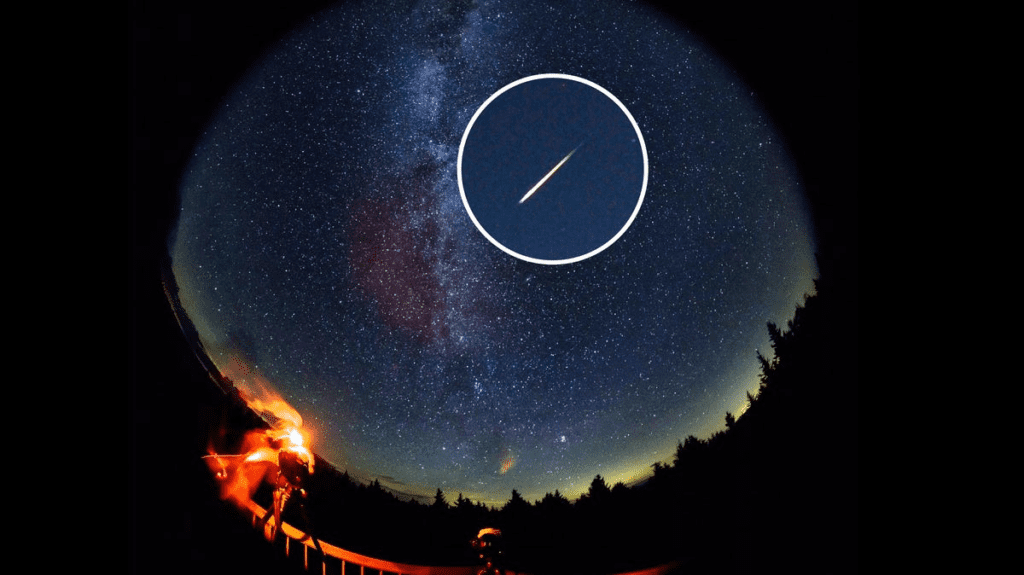The Perseid meteor shower — one of the best of the year, according to NASA — treats stargazers to plentiful bright meteors streaking swiftly through the atmosphere and colorful exploding fireballs. But the peak of the celestial event this year was competing with the bright moon.
A waning gibbous moon just days after a full moon compromised the period of maximum activity for the Perseids, according to the American Meteor Shower Society. Those conditions were expected to reduce visible activity by at least 75%, and only the brightest meteors were visible. People counting these “shooting stars” might have seen about 10 to 20 per hour instead of the typical 50 to 100.
Ohio’s notoriously fickle weather also complicated things.
But don’t lose hope, stargazers! There’s still time to catch the show. Here’s how and when.
Where to get the best view of the Perseid meteor shower
Unable to view our graphics? Click here to see them.
The Perseid meteor shower, among the most beautiful in the Northern Hemisphere, peaked on the evenings of Aug. 12 and 13. However, it will be visible through Aug. 23.
The best viewing times may be after midnight and just before dawn, although experts suggest going outside as early as 10 p.m. ET to get the most out of the experience, according to the Weather Channel.
Rural areas can often see between 50 and 75 meteors per hour, according to the American Meteor Society. To get a view of it, look toward the northeast and the constellation Perseus.
Ohio weather forecast for Perseid meteor shower
The weekend weather forecast in Ohio is looking promising to see meteors, according to the National Weather Service forecast for Akron, Columbus and Cincinnati.
In the Akron area, clear skies tonight, Aug. 15, will give way to partly cloudy skies with the chance of storms on Saturday and Sunday nights, Aug. 16 and 17. Partly cloudy skies will continue into Monday night, Aug. 18
The Columbus zone will see mostly clear skies in the forecast tonight, Aug. 15, with partly cloudy skies on Saturday night, Aug. 16. There’s a 30% chance of rain followed by clear skies on Sunday night, Aug. 17, with clear skies returning on Monday night, Aug. 18.
And in Cincinnati, mostly clear skies are in the forecast most nights through Monday, Aug. 18. The lone exception is Sunday, Aug. 17, which will see slightly more clouds that night.
The best places to view Perseid meteor showers in Ohio
So where are the best places to go in Ohio to see the Perseid meteor showers? The International Dark Sky Places (IDSP) program, an internationally recognized organization that certifies communities, parks and protected areas around the world that preserve dark skies, has two suggestions. The IDSP-designated dark sky places in Ohio are:
Other dark sky destinations around Ohio, according to Ohio Magazine, include:
- Burr Oak State Park: The nearest village is four miles away and has a population of less than 2,000, so it produces little light pollution.
- Stonelick State Park: The night skies here are some of the darkest in Ohio, according to the magazine, and it’s a common destination for Cincinnati-area stargazers.
- Wayne National Forest: Per the magazine, the isolated Lamping Homestead Recreation Area is arguably the darkest site in Ohio’s only national forest.
Profile of Perseids bright fireball activity
This chart uses data from 2014-2020 to show expected levels of Perseid meteor shower activity— it does not take into account the effects of the sun, moon and clouds, according to NASA.
Where did the Perseids originate from?
The Perseid meteor shower comes from the Comet Swift-Tuttle. American astronomers Lewis Swift and Horace Tuttle discovered the comet in 1862, according to NASA. The well-known Perseid meteor shower is formed when space debris from the Swift-Tuttle comet interacts with our atmosphere.
Which meteor shower has the brightest meteors?
The Perseid and Geminid meteor showers are typically regarded as the most active and most beautiful. It is easier to watch the Perseids on warm August nights, compared to the Geminids, which are active on cold December days.
Tips to get the best views of the meteor shower
Tips on how to catch the best views of a meteor shower, according to EarthSky:
◾Location, location, location: Find a spot away from city lights, locate the radiant in the sky and get comfortable.
◾No lights: Your eyes will need to adjust to the darkness, which could take 15 to 20 minutes.
◾Dress for the weather: Bring blankets or a camping chair to make the viewing comfortable.
◾Relax: Chill and take in the evening’s sky. Not all meteor showers are spectacular.

